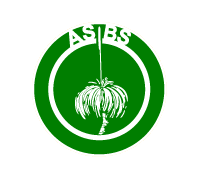
ASBS Newsletter – Book Review
Cottoning On
written by Siobhan McHugh
(From ASBS Newsletter Number 91, June 1997)
Published by: Hale & Ironmonger, Sydney, New South Wales. 1996. RRP $29.95.
This book is not about taxonomic botany. It does not even give the botanical name of cotton, or of cultivars, or how to grow them. It is a socio-political account of cotton growing on the river systems of northern New south Wales rarely even touching Queensland. Success cannot be denied, yields are high, quality is good and cotton has leapt to fifth place amongst Australian exports. Why recommend it to our readers? Because taxonomists are concerned with the enormous ecological consequences of this success. There are now huge areas of laser levelled fields without a tree in sight. More water rights have been sold than there is water to supply them. Landholders downstream are now suffering from reduced flows. Botanically rich areas like the Macquarie Marshes with their significant numbers of aquatic birds are under threat. There has been cavalier use of fertilizers and pesticides which have contributed to a Green Darling River. This hugely successful venture makes a nonsense of 'sustainable agriculture' and demonstrates how little the ecological consequences are weighed against the enormous political clout of a successful export industry. One can only be relieved that efforts to extend cotton growing to the Cooper seem to have been halted for the moment.
The book makes fascinating reading. It documents the spectacular success of the industry, some of the principal people appear in the scatter of illustrations, there is a simple map to keep one grounded. As usual the ecological consequences of the disruption of a major river system are only now evident and the usual high price will be paid by a later generation.
The final paragraph in the book sums it up.
'Paul Kahl once described cotton-growing as a disease, meaning it could consume you. He has certainly passed on the fever to another generation or two. But unless the next generation can learn to farm the land without ravaging the river, and to protect their crop without poisoning the air, Paul Kahl's words may be more prophetic than he had intended, with cotton the cancer spreading through the countryside. Will they get the balance right, between profits and profligacy? For that is what matters in the end. ... The dedication and hard work of the cotton industry cannot be denied, nor can their financial contribution to both the local and national economy ... [But] Australia's greatest asset and most viable commodity is not cotton. It is people, healthy people, and their ability to produce and protect the future generations of our nation.'
Reviewed by: David E. Symon
16 June, 1997